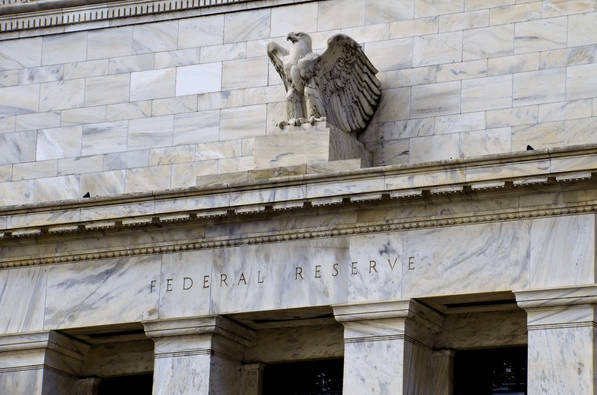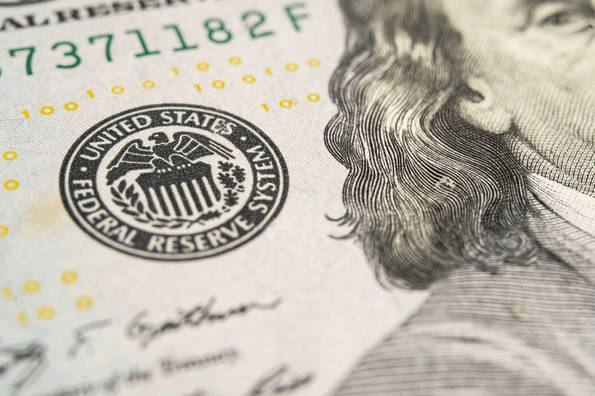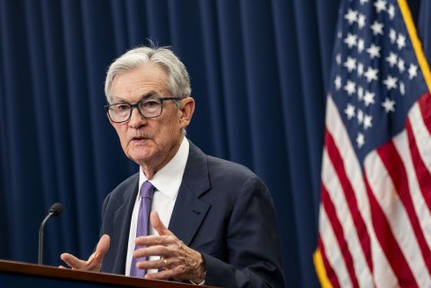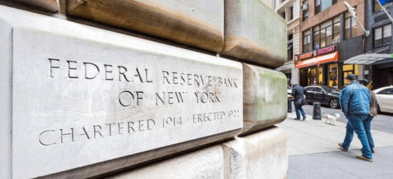Important Information
This website is managed by Ultima Markets’ international entities, and it’s important to emphasise that they are not subject to regulation by the FCA in the UK. Therefore, you must understand that you will not have the FCA’s protection when investing through this website – for example:
- You will not be guaranteed Negative Balance Protection
- You will not be protected by FCA’s leverage restrictions
- You will not have the right to settle disputes via the Financial Ombudsman Service (FOS)
- You will not be protected by Financial Services Compensation Scheme (FSCS)
- Any monies deposited will not be afforded the protection required under the FCA Client Assets Sourcebook. The level of protection for your funds will be determined by the regulations of the relevant local regulator.
Note: Ultima Markets is currently developing a dedicated website for UK clients and expects to onboard UK clients under FCA regulations in 2026.
If you would like to proceed and visit this website, you acknowledge and confirm the following:
- 1.The website is owned by Ultima Markets’ international entities and not by Ultima Markets UK Ltd, which is regulated by the FCA.
- 2.Ultima Markets Limited, or any of the Ultima Markets international entities, are neither based in the UK nor licensed by the FCA.
- 3.You are accessing the website at your own initiative and have not been solicited by Ultima Markets Limited in any way.
- 4.Investing through this website does not grant you the protections provided by the FCA.
- 5.Should you choose to invest through this website or with any of the international Ultima Markets entities, you will be subject to the rules and regulations of the relevant international regulatory authorities, not the FCA.
Ultima Markets wants to make it clear that we are duly licensed and authorised to offer the services and financial derivative products listed on our website. Individuals accessing this website and registering a trading account do so entirely of their own volition and without prior solicitation.
By confirming your decision to proceed with entering the website, you hereby affirm that this decision was solely initiated by you, and no solicitation has been made by any Ultima Markets entity.
I confirm my intention to proceed and enter this website Please direct me to the website operated by Ultima Markets , regulated by the FCA in the United KingdomWhat Does the Fed Interest Rate Cut Mean?
The Federal Reserve, often called the Fed, is the central bank of the United States. Its policies influence borrowing costs, inflation, employment, and even global trade. When the Fed changes interest rates, it shapes how money flows through the economy and affects decisions made by consumers, investors, and businesses around the world.
A Fed interest rate cut occurs when the central bank lowers its key benchmark rate to make borrowing cheaper and encourage growth. Understanding how this process works and why it matters helps explain how the Fed supports economic stability.

What a Fed Benchmark Interest Rate Cut Means
The Federal Reserve sets a target range for the federal funds rate, which is the interest rate banks charge each other for short term lending. It is the foundation for many other interest rates, including those on mortgages, credit cards, and business loans.
When the Fed cuts this rate, the cost of borrowing across the economy becomes cheaper. Banks can lend more freely, and consumers and businesses often respond by spending or investing more.

A rate cut usually signals that the Fed wants to stimulate the economy by making money more accessible and supporting growth when signs of weakness appear. The most common adjustment is a quarter point cut, equal to 25 basis points, although the Fed occasionally moves by half a point when conditions are more urgent. These small, measured steps allow policymakers to influence the economy gradually rather than causing sudden shocks.
In simpler terms, imagine you are a borrower with a home loan or credit card. When your interest rate drops, your monthly payments shrink, leaving you with extra money to spend or save. A Fed interest rate cut works the same way for the entire economy by freeing up credit and increasing liquidity.
Why the Fed Cuts Interest Rates
The Federal Reserve operates under a dual mandate. It aims to maintain maximum employment and stable prices. When the economy slows or unemployment rises, the Fed may reduce interest rates to stimulate demand.
Lower borrowing costs encourage households to buy homes, cars, and goods, while businesses can expand operations, hire workers, and invest in new projects. A healthier job market supports overall economic confidence and spending.
Rate cuts can also help restore stability when financial conditions tighten or global risks increase. However, if done too aggressively, they can fuel higher inflation, where prices rise faster than wages. For this reason, the Fed must carefully weigh its decisions to balance growth with long term price stability.
How a Rate Cut Works
The decision to change rates is made by the Federal Open Market Committee, the Fed’s policy making body. After agreeing to a rate cut, the committee uses several tools to guide short term rates toward the new target. These include open market operations and adjustments to the interest paid on reserves held by banks.
Lower rates reduce the cost of borrowing for banks, which often pass those savings to consumers and businesses. Over time, this encourages more spending, investment, and lending. However, these effects are not immediate. It can take several months for a rate cut to show up in broader economic data such as employment and inflation.
By influencing the cost of money, the Fed helps steer the pace of economic activity. If growth is too slow, it eases policy by cutting rates. If inflation becomes too high, it can raise rates to cool things down.
Benefits and Risks of a Rate Cut
Benefits
- Encourages economic growth by making credit more affordable
- Supports employment through stronger business activity
- Reduces financial pressure for borrowers and households
Risks
- Can lead to higher inflation if demand grows too quickly
- May cause asset bubbles when investors take excessive risks
- Limits the Fed’s ability to respond if another downturn occurs
Because of these trade offs, the Federal Reserve typically adjusts interest rates in small increments, observing how the economy responds before making further moves.
What a Rate Cut Means for You
For Consumers
Borrowing becomes cheaper when the Fed cuts rates. Mortgage and auto loan rates often decline, making it easier to finance major purchases or refinance existing debt. However, savings and deposit accounts also tend to offer lower returns, which can discourage saving.
For Businesses
Lower rates reduce the cost of capital, helping businesses fund new projects or manage short term debt. Smaller firms that rely on credit lines benefit from improved cash flow and easier access to financing.
For Investors
Stock markets often react positively to rate cuts because cheaper credit can increase corporate profits. Bond yields usually fall, pushing investors toward equities or other higher yielding assets. However, when rates remain low for long periods, investment risks can rise as markets search for higher returns.
Global Impact of Fed Policy
The United States dollar is the world’s leading reserve currency, which means any change in Federal Reserve policy can have global consequences.
When the Fed lowers rates, the dollar often weakens, making American exports more competitive and foreign imports more expensive. Lower United States yields can also encourage global investors to move money into emerging markets that offer higher returns.
Commodities such as oil and gold tend to become more attractive when rates fall, as investors seek assets that hold value during times of increased liquidity.
For countries that borrow or trade heavily in dollars, a Fed interest rate cut can ease external funding costs but may also increase exchange rate volatility. Because of its global influence, the Fed’s decisions are closely watched by central banks and financial markets around the world.
Why the Fed Moves Carefully
A Fed interest rate cut can boost growth, but it also comes with long term risks. Cutting too quickly can lead to inflation, while cutting too slowly can stall the economy.
The Federal Reserve makes each decision based on detailed analysis of inflation, employment, and overall financial stability. Members of the policy committee often hold differing views, and their debates shape the final decision. After each meeting, the Fed Chair explains the reasoning behind the decision and outlines future considerations, helping markets understand the central bank’s thinking.

This careful and data driven process helps maintain confidence in the financial system. It ensures that policy decisions are deliberate rather than reactive, keeping the economy balanced through both expansion and uncertainty.
Conclusion
A Fed interest rate cut is one of the most important tools in economic management. It makes borrowing cheaper, supports employment, and encourages investment during periods of slower growth.
For consumers, it can mean lower monthly payments. For businesses, it can provide opportunities to expand. For investors and other economies, it can shift capital flows and currency values around the world.
Every Fed interest rate cut sends a message that the Federal Reserve is adjusting its course to keep the economy on track. Understanding how and why it does so helps individuals and businesses make informed financial decisions in a constantly changing global landscape.
Disclaimer: This content is provided for informational purposes only and does not constitute, and should not be construed as, financial, investment, or other professional advice. No statement or opinion contained here in should be considered a recommendation by Ultima Markets or the author regarding any specific investment product, strategy, or transaction. Readers are advised not to rely solely on this material when making investment decisions and should seek independent advice where appropriate.












